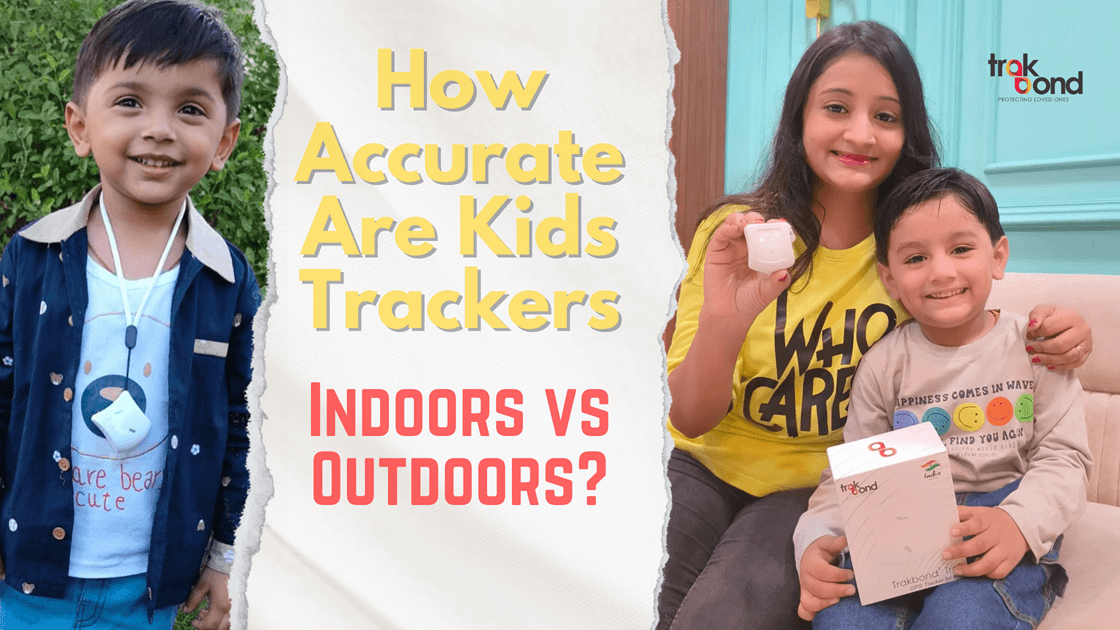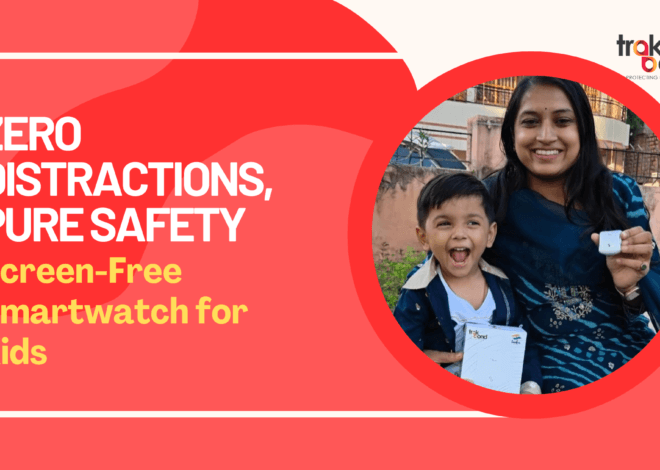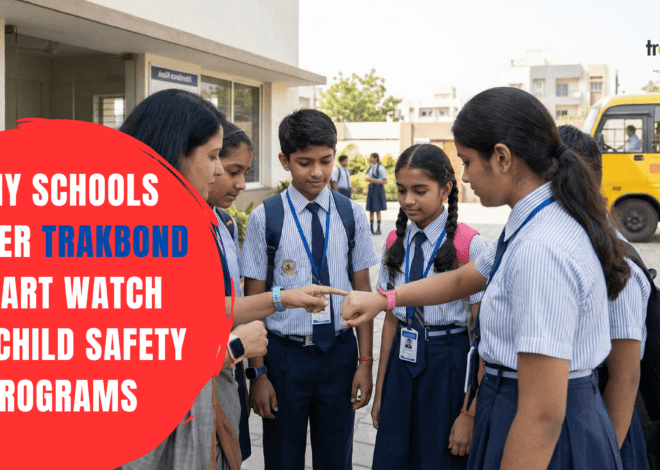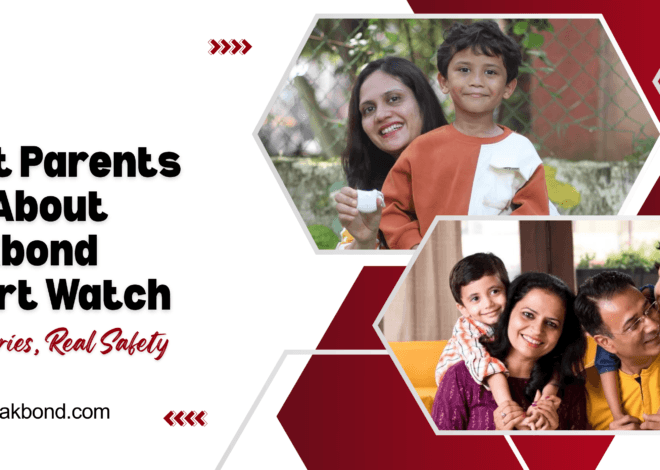
How Accurate Are Kids Trackers Indoors vs Outdoors?
As parents, we rely on kids GPS trackers for peace of mind. Whether our child is heading to school, playing outside, or exploring a shopping mall, a tracker ensures we know where they are at all times. But one common question arises: how accurate are kids trackers indoors compared to outdoors?
The answer depends on the underlying technologies—GPS, Wi-Fi, and cellular triangulation. Each has its strengths and weaknesses based on the environment. Let’s explore how these systems work, why accuracy changes, and how you can make the most of a kids tracker in both indoor and outdoor settings.
Understanding GPS Accuracy in Kids Trackers
GPS (Global Positioning System) is the backbone of most kid’s trackers. It uses satellites orbiting the Earth to determine a device’s position.
- Outdoor Accuracy: GPS works best outdoors where the device has a clear line of sight to satellites. Accuracy can range from 1–5 meters, making it reliable for open spaces like parks, streets, and playgrounds.
- Indoor Accuracy: Indoors, accuracy drops significantly. Concrete walls, roofs, and glass can block satellite signals. Location errors of 10–30 meters are common in malls, schools, or large buildings.
Best For: Outdoor tracking when your child is commuting, playing, or traveling.
Why Indoor Tracking Is Challenging
Unlike the outdoors, indoor environments present unique challenges:
- Signal Obstruction: Walls, ceilings, and furniture reduce satellite visibility.
- Multipath Errors: Signals bounce off surfaces before reaching the device, leading to inaccurate readings.
- Dense Networks: Urban areas with tall buildings create “urban canyons,” confusing GPS signals.
This is why kid’s trackers need alternative positioning systems like Wi-Fi and cellular triangulation when GPS struggles.
Wi-Fi Positioning Accuracy
Wi-Fi positioning detects nearby Wi-Fi networks and uses their signal strengths to estimate location.
- Indoor Accuracy: Typically 5–15 meters, making it more reliable than GPS indoors. For example, in a shopping mall or school campus, Wi-Fi positioning can pinpoint the floor or section where a child is.
- Outdoor Accuracy: Limited. Wi-Fi works only if access points are nearby, so accuracy outdoors is poor unless in dense urban zones.
Best For: Indoor tracking in schools, malls, libraries, or apartments.
Cellular Triangulation Accuracy
When GPS and Wi-Fi are unavailable, trackers fall back on cellular triangulation, which measures signals from nearby cell towers.
- Accuracy Range: 50–200 meters depending on tower density.
- Indoors vs Outdoors: Works both indoors and outdoors but is less accurate than GPS or Wi-Fi. Useful as a last resort in rural areas or highways.
Best For: Backup tracking in low-signal zones or when other systems fail.
Indoors vs Outdoors: A Side-by-Side Comparison
| Technology | Outdoor Accuracy | Indoor Accuracy | Best Use Case | Limitations |
| GPS | 1–5 meters | 10–30 meters | Parks, roads, playgrounds, commuting | Blocked by walls, buildings, glass |
| Wi-Fi Positioning | 20–50 meters | 5–15 meters | Schools, malls, residential complexes | Needs strong Wi-Fi coverage |
| Cellular Triangulation | 100–200 meters | 50–200 meters | Rural or backup tracking | Least precise, tower-dependent |
How Kids Trackers Combine These Technologies
Most advanced trackers, including Trakbond, use a hybrid positioning system. That means:
- Outdoors: GPS is the primary source, offering the most accurate results.
- Indoors: The tracker switches to Wi-Fi or cellular signals for better performance.
- Fallback Mode: If GPS and Wi-Fi fail, cellular triangulation ensures you still get a location, even if less accurate.
This multi-layered approach ensures your child is never “off the grid,” whether inside or outside.
Real-World Scenarios Parents Face
- Outdoor Playtime: GPS accurately locates your child in a park, down to the specific bench or play structure.
- School Building: Wi-Fi positioning narrows their location to the correct floor or classroom area.
- Shopping Mall: A mix of Wi-Fi and cellular triangulation shows their approximate zone near the food court or entrance.
- Highway Travel: GPS tracks the school bus in real-time, but if tunnels appear, cellular triangulation takes over until GPS reconnects.
Tips to Improve Tracker Accuracy
- Keep Firmware Updated: Manufacturers regularly release updates to enhance tracking accuracy.
- Ensure Battery Health: Weak batteries affect signal reception.
- Encourage Outdoor Use: When safe, let your child stay outdoors for clearer GPS reception.
- Use Geofencing: Set safe zones (home, school, playground) to receive alerts when your child enters or leaves these areas.
- Teach Your Child the SOS Feature: In case accuracy drops indoors, an SOS alert ensures you know immediately if they feel unsafe.
Why Accuracy Isn’t Just About Technology
Accuracy depends not only on the technology but also on context and responsiveness. Even if a tracker shows a 10-meter error indoors, that’s still enough to identify whether your child is in the library, cafeteria, or another section of a school.
The most important factor is that trackers give parents real-time updates and emergency alerts, reducing the response time during critical situations.
FAQ – Kids GPS Accuracy Indoors vs Outdoors
Q1. Why is GPS less accurate indoors?
Because satellite signals weaken or get blocked by walls, ceilings, and tall structures, leading to reduced precision.
Q2. How accurate is Wi-Fi tracking inside schools or malls?
Wi-Fi can pinpoint a child within 5–15 meters indoors, often more reliable than GPS inside buildings.
Q3. Can cellular triangulation locate my child precisely?
Not precisely. It can show a broad area within 50–200 meters. It’s best used as a backup method.
Q4. Which technology is best for rural areas?
Cellular triangulation, since Wi-Fi coverage may be poor and GPS signals can be affected by terrain.
Q5. Do all kids trackers use a hybrid system?
Not all. Basic trackers may only use GPS. Advanced devices like Trakbond use GPS + Wi-Fi + cellular for maximum accuracy.
Q6. Will tall buildings in cities affect GPS accuracy outdoors?
Yes, urban “canyons” can block signals, but Wi-Fi and cellular triangulation usually fill the gaps.
Q7. How often does a kids tracker update its location?
Depends on the settings. Many trackers update every 1–5 minutes, with faster intervals in SOS mode.
Q8. Is indoor accuracy enough for emergencies?
Yes. Even if the tracker shows a 10-meter range, that’s usually sufficient for parents to reach their child quickly indoors.
Final Thoughts
So, how accurate are kid’s trackers indoors vs outdoors? Outdoors, GPS gives near pinpoint precision. Indoors, accuracy drops, but Wi-Fi positioning and cellular triangulation ensure you still get a reliable estimate of your child’s location.
The bottom line: modern kids trackers like Trakbond combine these technologies to provide the best of all worlds. Whether your child is at the park, in school, or traveling, you’ll always have a safety net.
Looking for a kid’s tracker with strong GPS accuracy indoors and outdoors? Explore Trakbond hybrid trackers today—because your child’s safety can’t be left to chance.



